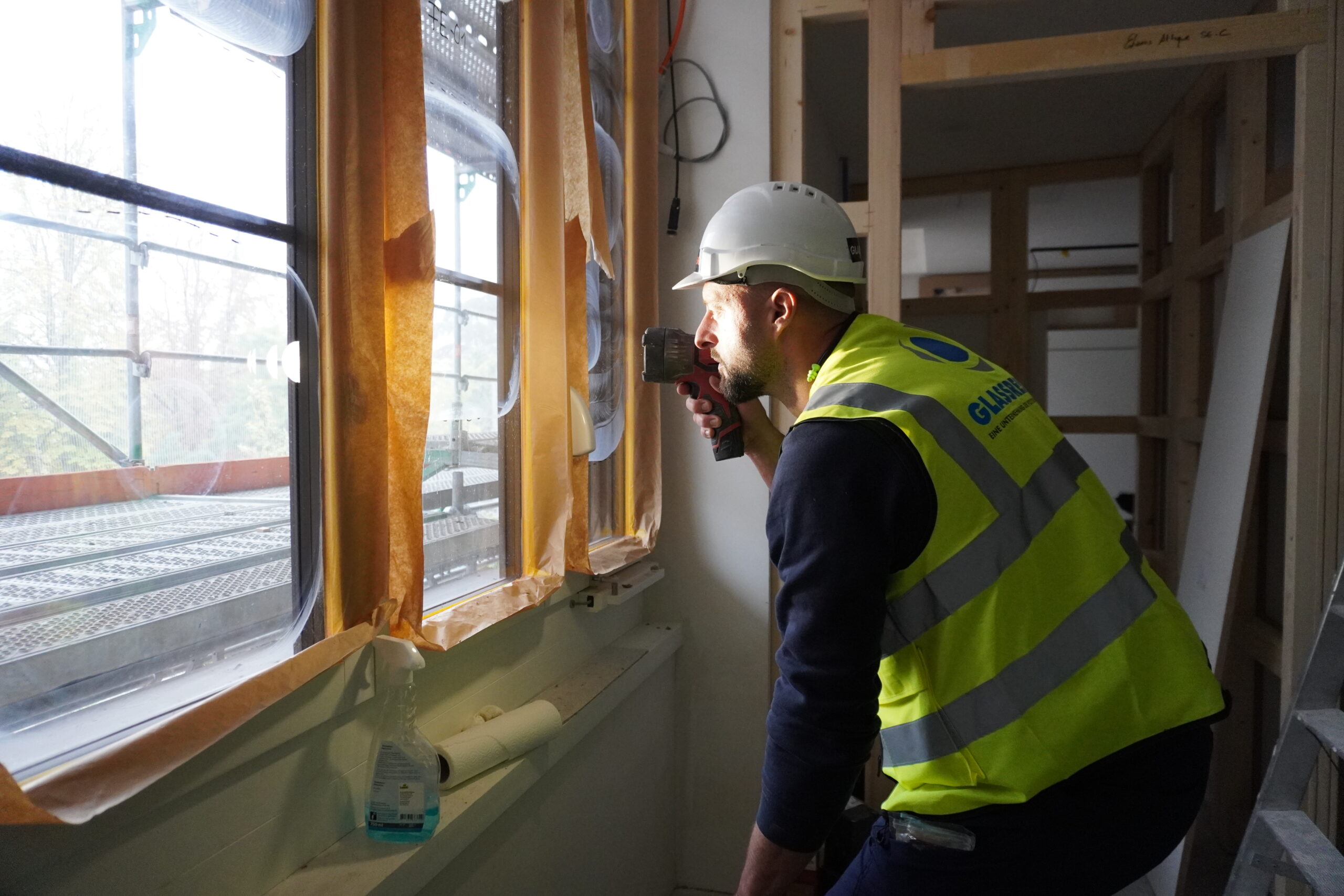Rules of Thumb for Surface Assessment
*A quick guide for visual inspection in everyday practice.

1.Kitchen countertops
-
 Distance: 1.5 meters
Distance: 1.5 meters
-
 Lighting conditions: Diffused daylight or standard room lighting
Lighting conditions: Diffused daylight or standard room lighting
-
 Viewing angle: Perpendicular to the surface
Viewing angle: Perpendicular to the surface
Natural stone, quartz composite, synthetic resin, solid wood, etc.
2. Floors
-
 Distance: 1.5 meters – 1.8 meters
Distance: 1.5 meters – 1.8 meters
-
 Lighting conditions: Diffused daylight
Lighting conditions: Diffused daylight
-
 Viewing angle: Perpendicular to the surface
Viewing angle: Perpendicular to the surface
Parquet, stone, etc.
3. Facades
-
 Distance: 3 meters – 15 meters (depending on the building part, e.g., 1.5 meters for doors)
Distance: 3 meters – 15 meters (depending on the building part, e.g., 1.5 meters for doors)
-
 Lighting conditions: Diffused daylight, no direct sunlight
Lighting conditions: Diffused daylight, no direct sunlight
-
 Viewing angle: Perpendicular to the surface
Viewing angle: Perpendicular to the surface
4. Glass surfaces
-
 Distance: 3 meters (according to SIGAB standard)
Distance: 3 meters (according to SIGAB standard)
-
 Lighting conditions: Diffused daylight, no assessment under grazing light
Lighting conditions: Diffused daylight, no assessment under grazing light
-
 Viewing angle: Perpendicular to the glass surface
Viewing angle: Perpendicular to the glass surface
5. Interior walls
-
 Distance: 1.5 – 2 meters
Distance: 1.5 – 2 meters
-
 Lighting conditions: Normal daylight or artificial lighting
Lighting conditions: Normal daylight or artificial lighting
-
 Viewing angle: Perpendicular to the wall
Viewing angle: Perpendicular to the wall
6. Sanitary fixtures
-
 Distance: 0.5 – 1.0 meters
Distance: 0.5 – 1.0 meters
-
 Lighting conditions: Normal room lighting, no extreme lighting
Lighting conditions: Normal room lighting, no extreme lighting
-
 Viewing angle: Perpendicular to the surface
Viewing angle: Perpendicular to the surface
Bathtubs, washbasins
7. Powder coatings
-
 Distance: 1 – 3 meters
Distance: 1 – 3 meters
-
 Lighting conditions: Normal daylight or room lighting
Lighting conditions: Normal daylight or room lighting
-
 Viewing angle: Perpendicular or slightly angled to the surface
Viewing angle: Perpendicular or slightly angled to the surface
Frequently Asked Questions (FAQ) – SMARTRESQ
What exactly does SMARTRESQ do?
SMARTRESQ specializes in the professional repair and renovation of damaged surfaces—either directly on the construction site or in existing structures. We repair instead of replacing, which saves costs, shortens construction time, and is more sustainable.
Which surfaces can be repaired?
We carry out renovations, among other things, on:
- Plastics (e.g., window frames, claddings)
- Metals (e.g., elevator doors, railings)
- Wood (e.g., doors, furniture, stairs)
- Natural stone (e.g., window sills, kitchen countertops)
- Ceramic and enamel (e.g., bathtubs, sinks)
- Powder-coated elements
- Anodized aluminum
- Drilling hole renovation
- Artificial stone
- Quartz composite
- Synthetic resin
What are the advantages of repair compared to replacement?
- Cost savings: Repairs are significantly cheaper than replacements.
- Time savings: No disassembly, no delivery times.
- Sustainability: Resources are conserved, waste is avoided.
- Appearance: The repaired area is usually hardly visible.
How does a renovation with SMARTRESQ proceed?
- Record the damage (via email, photo, or on-site)
- Receive a quote
- Schedule a date for the repair
- Repair on-site by our technicians
- Usually, final inspection and handover
How quickly can a damage be repaired?
Usually within a few days – depending on availability. For urgent cases, we try to find short-term solutions.
Where is SMARTRESQ active?
Our technicians are active throughout Switzerland – mainly on construction sites, with property management companies, general contractors, insurance companies, as well as private customers.
What is the cost of a repair?
The costs depend on the damage and materials. Just send us a photo or a description – we will gladly provide a non-binding quote. Check here!
Can I report multiple damages at once?
Yes, that’s even more efficient. If you wish, we also conduct damage inspections and carry out combined repairs.
How long does a repaired surface last?
Our work is designed for durability. Under normal use, repairs are guaranteed to last for a longer period.
SMARTRESQ rule:
„Defects that are not visible at normal viewing distance and under usual lighting conditions are considered acceptable.“
Use our inquiry form!
Upload the images and a brief description in the form, and we can then provide an initial assessment of the damage.
*Note: These guidelines provide general orientation for surface assessment and do not replace binding standards or regulations. The rules of thumb described here are not legally binding and may vary. For binding assessment criteria, the applicable norms and standards are decisive.